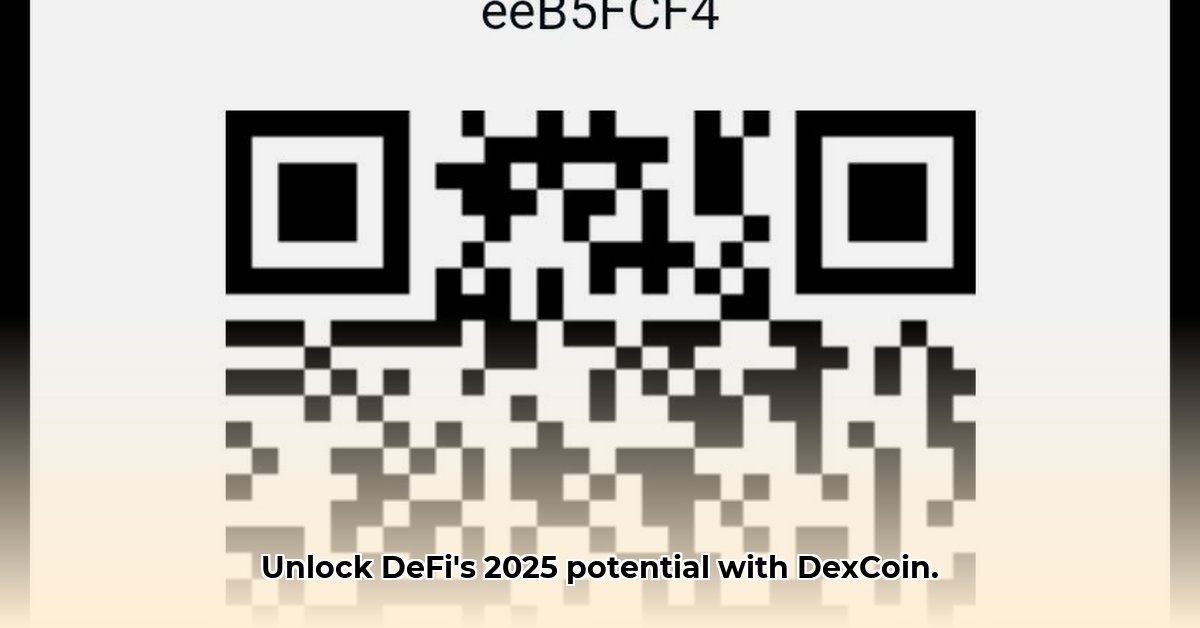
Understanding DexCoin's Decentralized Exchange (DEX)
DexCoin is a novel decentralized exchange (DEX) operating within the burgeoning decentralized finance (DeFi) ecosystem. Unlike traditional centralized exchanges, DexCoin facilitates peer-to-peer cryptocurrency trading without intermediaries, promising faster transactions and increased user control. But what are its unique features, and how does it compare to established players? This guide will provide actionable intelligence to navigate the opportunities and risks associated with DexCoin. For more on top meme coins, check out this resource.
How DexCoin Works: A Technical Overview
DexCoin likely employs an Automated Market Maker (AMM) model (a system that automatically sets prices based on supply and demand). This contrasts with order-book DEXs, which require matching buy and sell orders. In an AMM, liquidity pools (collections of cryptocurrencies locked in smart contracts) provide the trading functionality. Users swap cryptocurrencies by interacting with these pools, changing the price based on the relative amounts of each asset held. This mechanism allows for trades to occur 24/7 without the need for matching orders.
DexCoin's security likely relies on the robust security of its underlying smart contracts. These self-executing programs govern all transactions. Regular independent audits are believed to be in place to identify and remediate potential vulnerabilities. Transparency, a cornerstone of DeFi, is also expected, with much of the code publicly available for community review. This open-source approach allows for greater scrutiny and community involvement in security enhancement. Did you know that transparent systems, although offering higher accountability, can still be vulnerable to sophisticated attacks?
DexCoin's Position in the DeFi Ecosystem
Several factors determine a DEX's success: transaction fees, trading volume, liquidity, and security. While precise figures are unavailable for DexCoin at this stage, it's crucial to look at the competitive landscape. Established DEXs such as Uniswap and Curve boast extremely high trading volumes and liquidity. DexCoin's success will depend on its ability to differentiate itself. This could involve factors like superior transaction speeds, innovative trading features, or highly competitive fees.
How does DexCoin compare in this ever-evolving market? Currently, without access to DexCoin's live data, it's impossible to quantify its precise competitiveness. But projecting potential based on current DeFi trends, we can extrapolate the need for substantial liquidity and robust security to attract users from platforms like Uniswap and Curve. The platform's focus on a niche market or user experience innovations might be crucial for its early-stage growth.
Risks and Rewards of Using DexCoin: A Balanced Perspective
The DeFi landscape, while offering substantial rewards, presents inherent risks. DexCoin is no exception. High potential returns through strategies like yield farming are attractive, but come with significant risks.
Potential Upsides:
- High Potential Returns: DeFi projects can offer attractive returns, though volatility is considerable.
- Decentralization: User control over assets is greatly enhanced compared to centralized exchanges.
- Transparency (Ideally): Open-source smart contracts promote transparency, though vulnerabilities can still exist.
Potential Downsides:
- Smart Contract Vulnerabilities: Bugs in the code can lead to significant financial losses, impacting user funds. Hence, rigorous audits are crucial.
- Regulatory Uncertainty: The regulatory landscape is still developing, presenting uncertainty for DeFi projects.
- Liquidity Risks: A sudden influx of sell orders might temporarily reduce liquidity, affecting price stability.
- Impermanent Loss: Liquidity providers risk losing money if the value of their contributed assets changes significantly.
Actionable Insights for DexCoin Stakeholders
Following are practical recommendations tailored to different stakeholders:
Developers: Prioritize ongoing security audits, user-centric design, and innovative features. Transparency and community engagement are paramount.
Investors: Conduct thorough due diligence, including reviewing smart contract audits. Diversify investments, and only invest what you can afford to lose. Consider the development team's reputation and roadmap.
Users: Secure private keys diligently. Understand DeFi risks and only trade with amounts you're comfortable losing. Employ strong security practices such as two-factor authentication.
Regulators: Foster collaboration between regulatory bodies and DeFi projects. Develop clear but adaptable regulatory frameworks to balance innovation and consumer protection.
Conclusion: DexCoin's Future in DeFi
DexCoin's success depends on factors such as robust security, user experience, competitive fees, and regulatory developments. The DeFi landscape is highly dynamic; constant due diligence and risk management are essential for all involved. Remember to stay informed and prioritize security best practices. DexCoin's future is intertwined with the broader evolution of DeFi, making it a project requiring careful observation and strategic decision-making.